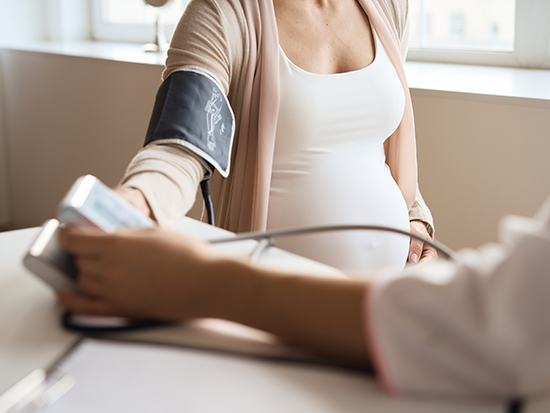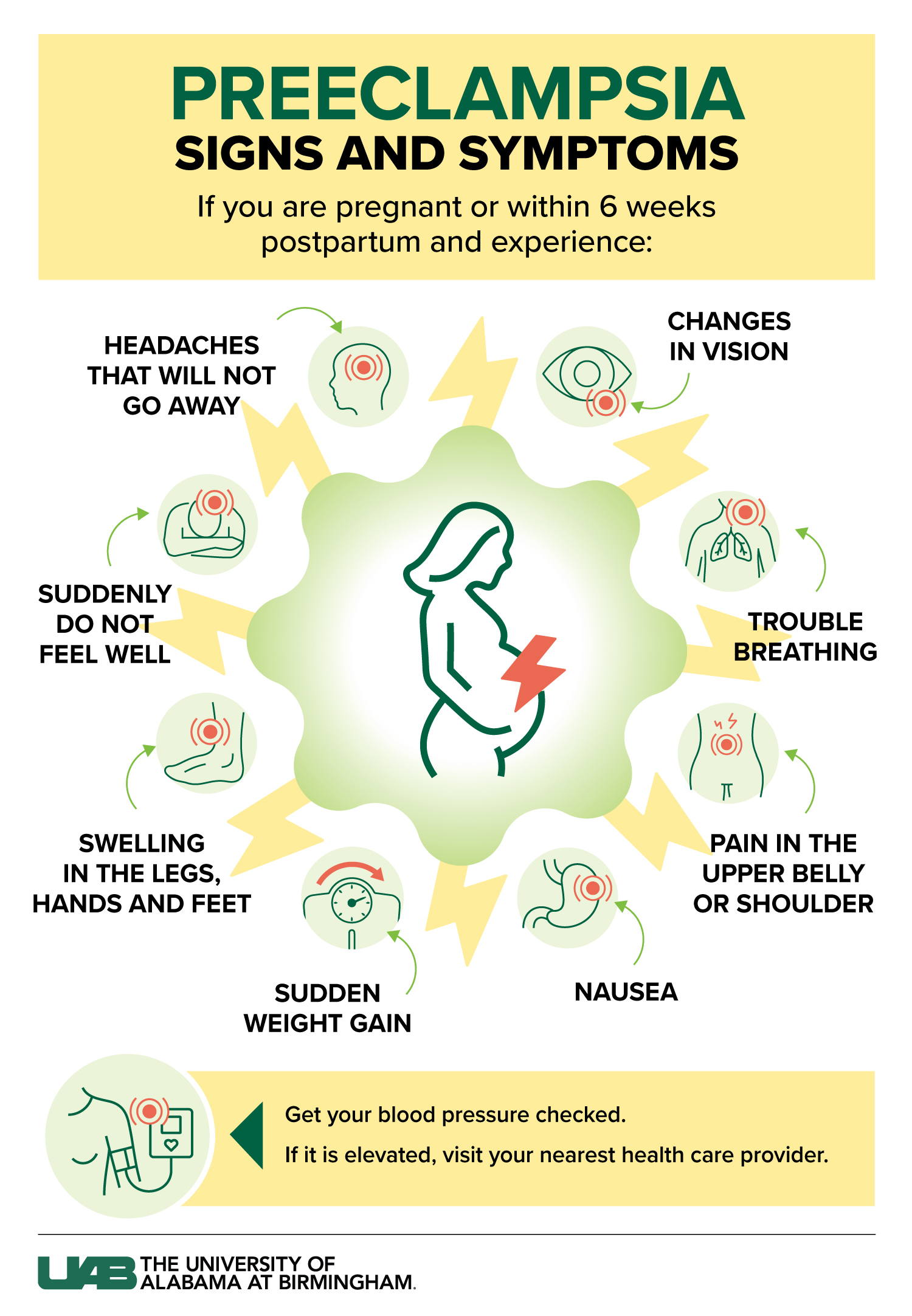 Preeclampsia is a leading cause of maternal mortality. Brian Brocato, D.O., UAB maternal-fetal medicine specialist, discusses the signs, symptoms and treatment of the pregnancy condition.Preeclampsia occurs in 3 percent to 7 percent of pregnancies in the United States and is a leading cause of maternal mortality. The signs and symptoms of preeclampsia often mimic expected pregnancy symptoms — swelling, headaches, nausea — but untreated it can quickly turn into a life-or-death situation for both mom and baby.
Preeclampsia is a leading cause of maternal mortality. Brian Brocato, D.O., UAB maternal-fetal medicine specialist, discusses the signs, symptoms and treatment of the pregnancy condition.Preeclampsia occurs in 3 percent to 7 percent of pregnancies in the United States and is a leading cause of maternal mortality. The signs and symptoms of preeclampsia often mimic expected pregnancy symptoms — swelling, headaches, nausea — but untreated it can quickly turn into a life-or-death situation for both mom and baby.
Brian Brocato, D.O., maternal-fetal medicine specialist at the University of Alabama at Birmingham and obstetrics lead of the Alabama Perinatal Quality Collaborative, discusses preeclampsia and its signs and symptoms pregnant and postpartum women should be aware of.
"We want moms to be aware of changes to their bodies that can be expected during pregnancy and the postpartum period versus changes that could be signs of preeclampsia," Brocato said. "Listening to your body and notifying your provider of concerning symptoms could save your life, as well as the baby's life."
What is preeclampsia?
Preeclampsia is characterized by severe hypertension, or high blood pressure, and signs of damage to organ systems such as the brain, liver and kidneys. It has also been shown to increase the risk of maternal and fetal morbidity, including cardiovascular complications, preterm delivery, low birth weight and even death. Preeclampsia occurs after 20 weeks, typically within the third trimester, but can also occur up to six weeks postpartum.
What causes preeclampsia?
The exact cause of preeclampsia remains unclear. However, Brocato says, there are factors that can put women into a higher risk category for developing the condition.
Factors include:
- History of chronic hypertension
- Preeclampsia in previous pregnancies
- Multiple fetuses
- Maternal age older than 35
- Select autoimmune conditions
- Kidney disease
What are the signs of preeclampsia?
“Many women do not realize they have preeclampsia because many of the symptoms are common during pregnancy,” Brocato said. “However, if someone develops these symptoms, they need to check their blood pressure. If their blood pressure is elevated, they need to immediately visit their nearest health care provider.”
 Click image to enlarge.
Click image to enlarge.
Graphic by: Jody PotterBrocato reiterates that preeclampsia can occur during pregnancy and within the first few weeks postpartum. Those who developed preeclampsia during pregnancy should also closely monitor symptoms afterward as well.
Symptoms include:
- Headaches that will not go away
- Changes in vision
- Trouble breathing
- Pain in the upper belly or shoulder
- Nausea
- Sudden weight gain
- Swelling in the legs, hands and feet
- Suddenly feeling unwell
Women can have their blood pressure checked at health care providers, most pharmacies, grocery stores and fire stations.
What is the treatment for preeclampsia?
Treatment for preeclampsia depends on where one is in their pregnancy when the condition develops. Brocato says delivery is the treatment option for those who are close to their due date. However, there are management options for those who are not close to their due date. The most common management options include antihypertension management to control blood pressure and close monitoring or hospitalization, depending on severity.